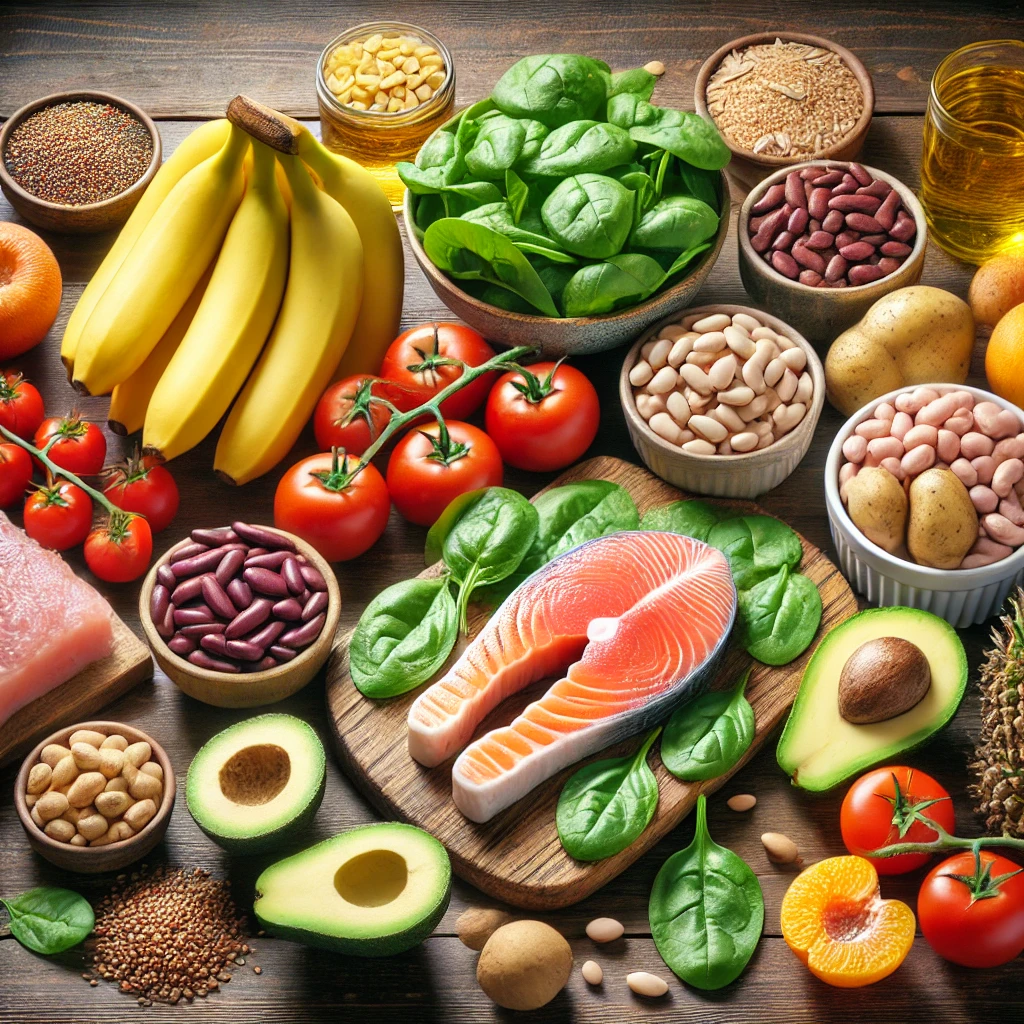If your are trying to increase your potassium intake then just relying on a daily banana might not be enough. In fact, a single banana provides only about 11% of the recommended daily intake. Potassium plays a crucial role in regulating blood pressure, transporting nutrients throughout the body, and ensuring proper nerve and muscle function. But don’t worry—there are plenty of other foods that are rich in potassium and can help you meet your daily needs.

But first what is potassium?
Potassium is a key electrolyte, minerals present throughout the body that maintain vital functions, such as fluid balance and heart health. “Good potassium levels are also associated with better bone health – which is especially important during your teen years before peak bone density is reached, and after menopause when osteoporosis is more of a risk,” says nutritionist and gut health expert Dr Lucy Williamson.
If we don’t get enough potassium an imbalance can occur, and “we are at a greater risk of developing symptoms such as fatigue, increased anxiety, lack of concentration, poor energy, muscle cramps, headaches, PMS and poor athletic performance”, according to Artah founder Rhian Stephenson. Electrolytes are also particularly essential for good “long-term cognitive health. Recent studies have shown that potassium and magnesium levels may improve cognitive performance in both dementia and Alzheimer’s patients,” she concludes.

Bananas
Banana is the most well-known potassium-rich food, a top pick from both experts. According to the National Institutes of Health (NIH), one medium-size banana contains 422 milligrams (mg) of potassium.
Oranges
Oranges not only just provide us with vitamin C but also a good source of potassium; one cup of orange juice alone provides 496 mg of the mineral.
Apricots
Another fruit that is packed with potassium, half a cup of dried apricots can give you 755 mg.
Avocados
Avocados are also a great source for your potassium needs. According to the U.S. Department of Agriculture (USDA), 100 grams (g) of an avocado can contain 507 mg of potassium.
Tomatoes
Many forms of tomatoes can be a great source of potassium. According to the NIH, one raw tomato alone can provide 292 mg of the mineral. The USDA says that tomato paste can provide 198 mg, and two-thirds of a cup of tomato paste can provide 1,010 mg of potassium.
Potatoes
The NIH lists potatoes as one of the top sources of potassium for our diets. One medium baked potato can provide 610 mg of the mineral.
Beans
Fulfilling both your potassium and protein needs, beans make for a great option in any diet. According to the NIH, one cup of canned beans can get you 607 mg of potassium.
Pineapple
Sharp recommends trying to incorporate pineapple into your diet if you’re fond of sweet fruit. According to the USDA, 100 g contains 137 mg of potassium.
Whole Grains
Rice, quinoa, oats, and other whole grains make for another great source of potassium: 100 g of oats contains 350 mg of the mineral, and 100 g of brown rice contains 265 mg.
Spinach
Spinach is packed with essential nutrients and vitamins, making it a valuable addition to a healthy diet. It’s also an excellent source of potassium. According to the USDA, just half a cup of cooked spinach contains around 287 mg of potassium, while a cup of raw spinach provides about 167 mg.
Chicken
Fruits and vegetables aren’t just only foods that are packed with potassium. Plenty of meats also help fill that void. According to the NIH, 3 ounces of grilled chicken breast contains 332 mg of the mineral.
Salmon
If you’re looking for a fish option, salmon is your best bet. According to the NIH, 3 ounces of cooked Atlantic salmon contains 326 mg of potassium.
READ MORE: Women’s Day Gift Hampers To Make Her Feel Special
Pingback: Holika Dahan & Holi 2025: Date, muhurat timings, and more details - The Look